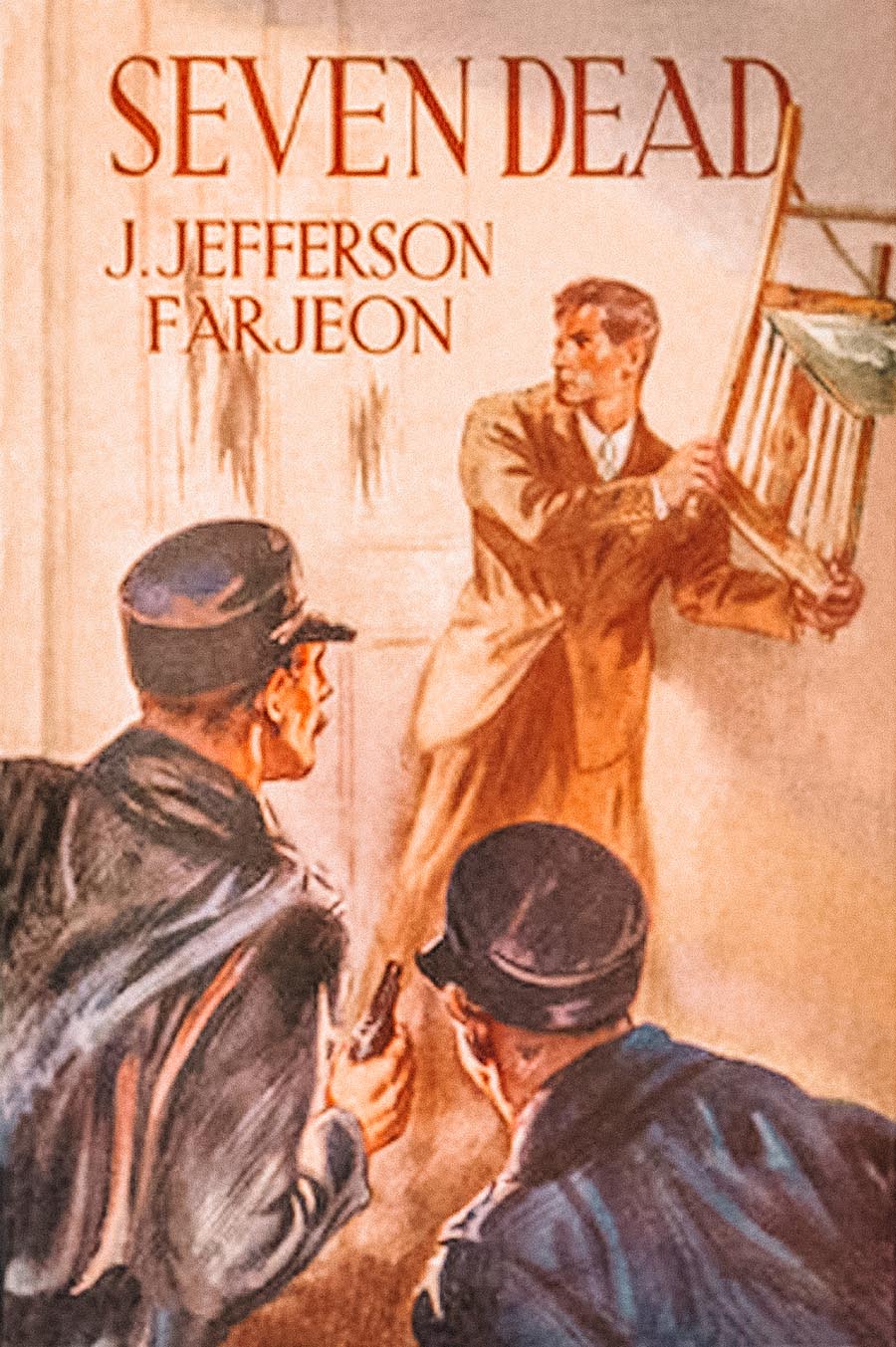This year I’m participating in several reading challenges hosted by Carol and Bev. This is an entry for those challenges. You can find more posts under these tags:
- Cloak and Dagger Challenge/#CloakandDaggerChal – Finished 1/15
- Vintage Scavenger Hunt/#2024VintageScavengerHunt – Any Piece of Furniture (Chair)
- Goodreads 2024 Reading Challenge – Finished 1/20
I didn’t really know what to expect from J. Jefferson Farjeon. Seven Dead is the first book of his that I’ve picked up, so I don’t have anything to compare it to. But hey, at least he’s upfront about it – he straight-up tells you there’ll be at least seven dead people in the story.
But beware!
Okay, so what slipped through the cracks in the title is that alongside the nauseating pile of dead bodies, there are also a couple of dead cats thrown in for good measure. Normally, I can handle a high body count in a mystery, but this crossed a line. As a cat lover, this felt anathema to me, and I’m unapologetically docking a whole point from my enjoyment rating. In fact, I ended up skipping several pages until I landed in a “safe zone.” Heads up to fellow cat enthusiasts or anyone sensitive to animal harm—consider yourself warned.
Story Summary & Thoughts
Seven Dead kicks off with a classic locked-room mystery: seven lifeless bodies discovered in—you guessed it—a locked room. The unfortunate soul stumbling upon this grim scene is Ted Lyte, a down-on-his-luck small-time burglar. Despite his pivotal role in the opening chapters, Ted disappears from the narrative after being hauled off to the local police station. There, while recovering from his shock, he spills the horrifying details to Inspector Kendall.
Inspector Kendall also takes a temporary backseat as the story shifts its focus to Thomas Hazeldean, an independent journalist who becomes infatuated with a painting of a young girl—one with a bullet hole through it, no less.
This obsession eventually leads him to the grown-up version of the girl, Dora Fenner, but their encounter fell flat for me. The chapters detailing their meeting dragged on, and since I don’t speak French, the bits of untranslated dialogue didn’t help matters. I struggled to feel much sympathy for Dora, despite the narrative’s attempts to paint her as fragile and delicate. Hazeldean, too, started strong as a character but quickly lost his edge after this tedious interaction. My interest in him fizzled out soon after.

The story picks up again when Inspector Kendall returns to the forefront. Following a trail of footprints—or in this case, bicycle tracks—the narrative gradually unravels the mystery and reveals the culprit. By this point, I already had a pretty solid hunch about who it was, mostly because there didn’t seem to be any other plausible suspects. Then came an unexpected time jump: the three central characters suddenly meet up, but the abrupt transition made me feel like I’d accidentally skipped a chapter or two. The disconnect between the end of one chapter and the beginning of the next was jarring.
The final chapters were the highlight for me. By then, I had resigned myself to the fact that the murder motive would be so random that only someone like Sherlock Holmes could have seen it coming. Even so, I appreciated how Farjeon tied the resolution back to the origin of the mystery, grounding the story in events from years earlier. The conclusion felt satisfying enough to redeem some of the slower parts.
Would I read another Farjeon novel after Seven Dead? Maybe. I still have Thirteen Guests waiting on my shelf from a purchase I made last year. Inspector Kendall intrigued me enough to give it a try, and I’m curious to see if Farjeon’s other works carry the same faintly Gothic tone that I sensed in this one.
Would I re-read Seven Dead? Probably not anytime soon. While the premise of the mystery was undeniably intriguing, the journey to its resolution was riddled with more pitfalls than I’d prefer. I also struggled to connect with the characters, finding it hard to muster much sympathy for any of them. Ultimately, while the idea behind the story had promise, the execution left me less than eager for a repeat read.


